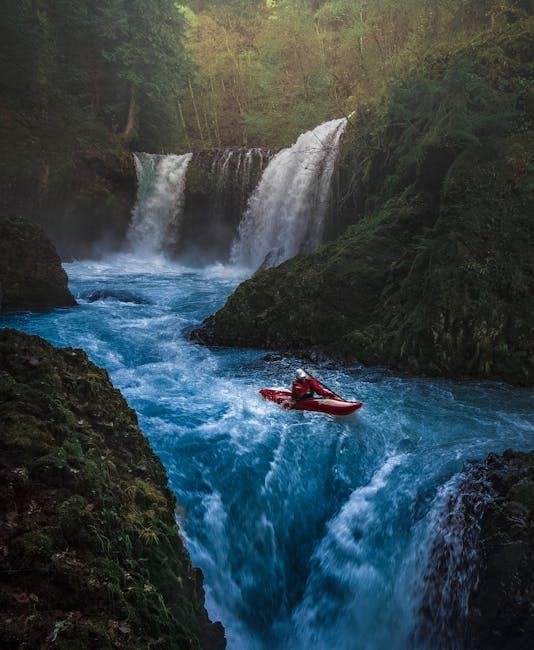Kayaking, an exhilarating blend of adventure and tranquility, invites paddlers to navigate serene lakes, winding rivers, and breathtaking coastlines. Whether you’re a novice dipping your paddle into the water for the first time or an experienced kayaker looking to refine your technique, mastering the basic strokes is essential for a smooth and enjoyable journey on the water. This article explores ten basic kayaking strokes that every paddler should know, laying the foundation for confident maneuvering, efficient paddling, and exploring the great outdoors with ease. From the essential forward stroke to the elegant sweep stroke, we’ll guide you through each technique, helping you unlock the full potential of your kayaking experience. Ready to paddle with purpose? Let’s dive in!
Essential Techniques for Every Kayaker
Mastering fundamental kayaking strokes is vital for navigating various water conditions with grace and efficiency. Each technique enhances your ability to steer, accelerate, and maintain control. As you practice, consider these key strokes:
- Forward Stroke: Essential for moving ahead, this stroke uses a smooth, steady motion to propel the kayak.
- Reverse Stroke: Key for slowing down or moving backward, it involves pulling the paddle toward the kayak.
- Draw Stroke: Employed to change direction or dock, this stroke requires pulling the paddle toward the boat.
- Sweep Stroke: Great for turning, it involves a large arc with the paddle, moving from the bow to the stern.
Each stroke serves a distinct purpose, helping kayakers adapt to different situations on the water. To further enhance your skills, understanding the proper body positioning and paddle techniques is equally vital. The relationship between your torso and arms can significantly affect your efficiency and stability. Here’s a fast reference table on body positioning:
| Position | Description |
|---|---|
| Seated | Maintain an upright posture for better balance and reach. |
| Core Engagement | Utilize your core muscles for power and stability during strokes. |
| Relaxed Grip | Hold the paddle lightly to avoid unnecessary fatigue and improve control. |

Mastering Forward and Reverse Strokes
The foundational strokes for any kayaker include the forward and reverse strokes, each playing a crucial role in your overall paddling efficiency. The forward stroke propels your kayak forward and is executed by immersing the blade into the water in front of you, then pulling it through the water alongside the kayak, exiting near your hip. To achieve maximum power, maintain a relaxed grip while engaging your core and rotating your torso to enhance the reach of each stroke. Remember to keep the paddle blade vertical to minimize resistance and allow for smoother gliding.
In contrast,the reverse stroke is essential for maneuvering and slowing down. begin with the paddle at your hip, then submerge the blade and push it back in a sweeping motion. This stroke is particularly useful when you need to make quick adjustments or back up. To ensure effectiveness, maintain a low angle to avoid dragging the paddle through the water, and use controlled rhythmic movements to maintain balance. By mastering both strokes, you will not only improve your speed and agility on the water but also enhance your overall kayaking experience.

Navigating Turns with Precision
Mastering the art of turning your kayak effectively is crucial for navigating both calm and turbulent waters. One of the key techniques to embrace is the J-stroke, which not only propels you forward but also helps you pivot smoothly. To execute a J-stroke,start with a regular paddle stroke,then,as the paddle reaches your hips,turn the blade slightly and pull it in a “J” shape. This subtle curve redirects the kayak while maintaining momentum, allowing for precise turns without losing speed. another useful stroke is the draw stroke, ideal for immediate changes in direction.Position your paddle parallel to the kayak, pull straight towards you, and watch the kayak move laterally across the water, facilitating swift adjustments during tight maneuvers.
Additionally, the backstroke can be a powerful tool for more controlled turns. By paddling in reverse, you can turn the bow of the kayak in the desired direction while stabilizing your position in the water. It’s best to combine these techniques with body weight shifts for optimum control. As you progress, practicing these strokes will help you develop a natural rhythm and enhance your ability to guide your kayak through various obstacles with ease. Consider keeping a visual checklist of your progress to track improvements and refine your skills:
| Stroke | Purpose | Tips |
|---|---|---|
| J-stroke | Forward propulsion with turning | Focus on smooth transitions |
| Draw stroke | Lateral movement | keep paddle parallel to the kayak |
| Backstroke | Controlled turning | Redistribute weight for better stability |

Enhancing Efficiency with Bracing and Sweep strokes
When navigating through challenging waters or executing intricate maneuvers, the submission of effective bracing and sweep strokes can significantly enhance your paddling efficiency. Bracing strokes serve as a stabilizing technique, allowing paddlers to maintain balance and prevent capsizing in rough conditions. By positioning the paddle vertically and using the buoyancy of the blade to counteract any tilt, you can confidently brace against unexpected waves or turbulence.Practice the high brace and low brace techniques to develop your skills and adapt to varying situations.
Conversely, stroke efficiency is elevated through the strategic use of sweep strokes during turns.By sweeping the paddle in a wide arc away from your kayak, you can create a turning force that allows for smooth directional changes. This technique not only conserves energy but also enhances maneuverability. To master sweeps,focus on the placement of your paddle,and ensure a full rotation of your torso to maximize the stroke’s effectiveness. Incorporate these strokes into your practice routine to transform your paddling experience.
Key Takeaways
As you embark on your kayaking adventures, mastering these 10 basic strokes will not only enhance your paddling skills but also deepen your recognition for the serene beauty of nature that surrounds you. Each stroke opens the door to new possibilities on the water—whether you’re navigating calm lakes or tackling swift river currents. Remember, practice makes perfect. The more you paddle, the more intuitive these movements will become, transforming you into a confident and capable paddler. So grab your kayak, embrace the rhythm of the strokes, and let the water guide your journey. Happy paddling!
